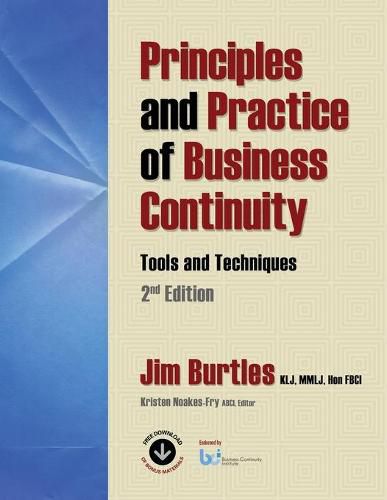Readings Newsletter
Become a Readings Member to make your shopping experience even easier.
Sign in or sign up for free!
You’re not far away from qualifying for FREE standard shipping within Australia
You’ve qualified for FREE standard shipping within Australia
The cart is loading…






This title is printed to order. This book may have been self-published. If so, we cannot guarantee the quality of the content. In the main most books will have gone through the editing process however some may not. We therefore suggest that you be aware of this before ordering this book. If in doubt check either the author or publisher’s details as we are unable to accept any returns unless they are faulty. Please contact us if you have any questions.
Whether you are a student, a beginner, or a Business Continuity professional, are you ready to keep the business up and running in the face of emergencies ranging from earthquakes to accidents to fires to computer crashes? In this second edition of Principles and Practice of Business Continuity: Tools and Techniques, Jim Burtles speaks to you directly and personally. From his decades of experience, he walks you through six main scenarios, teaching you to handle any contingency. He promises, If you and your organization are prepared to deal with these six generic risks, you will be able to recover from any business disaster. With logical, step-by-step actions and real-world examples, Burtles gives you the confidence to get the job done, teaching you how to: “” bring people together to win executive support, “” create a plan, “” organize response teams, and “” recover from the disruption. Instructor’s Manual, Test Bank, and a full set of PowerPoint classroom slides included with qualified textbook adoptions for college classes, seminars, or workshops. Designed with the classroom in mind, this new and updated edition of Principles and Practice of Business Continuity: Tools and Techniques begins each chapter with learning objectives and ends with a multiple-choice self-examination. Thought-provoking exercises help the student to apply the materials from each chapter to personal experience. The book ends with a glossary of the standard key terms currently in use in the industry and a full index.
$9.00 standard shipping within Australia
FREE standard shipping within Australia for orders over $100.00
Express & International shipping calculated at checkout
This title is printed to order. This book may have been self-published. If so, we cannot guarantee the quality of the content. In the main most books will have gone through the editing process however some may not. We therefore suggest that you be aware of this before ordering this book. If in doubt check either the author or publisher’s details as we are unable to accept any returns unless they are faulty. Please contact us if you have any questions.
Whether you are a student, a beginner, or a Business Continuity professional, are you ready to keep the business up and running in the face of emergencies ranging from earthquakes to accidents to fires to computer crashes? In this second edition of Principles and Practice of Business Continuity: Tools and Techniques, Jim Burtles speaks to you directly and personally. From his decades of experience, he walks you through six main scenarios, teaching you to handle any contingency. He promises, If you and your organization are prepared to deal with these six generic risks, you will be able to recover from any business disaster. With logical, step-by-step actions and real-world examples, Burtles gives you the confidence to get the job done, teaching you how to: “” bring people together to win executive support, “” create a plan, “” organize response teams, and “” recover from the disruption. Instructor’s Manual, Test Bank, and a full set of PowerPoint classroom slides included with qualified textbook adoptions for college classes, seminars, or workshops. Designed with the classroom in mind, this new and updated edition of Principles and Practice of Business Continuity: Tools and Techniques begins each chapter with learning objectives and ends with a multiple-choice self-examination. Thought-provoking exercises help the student to apply the materials from each chapter to personal experience. The book ends with a glossary of the standard key terms currently in use in the industry and a full index.